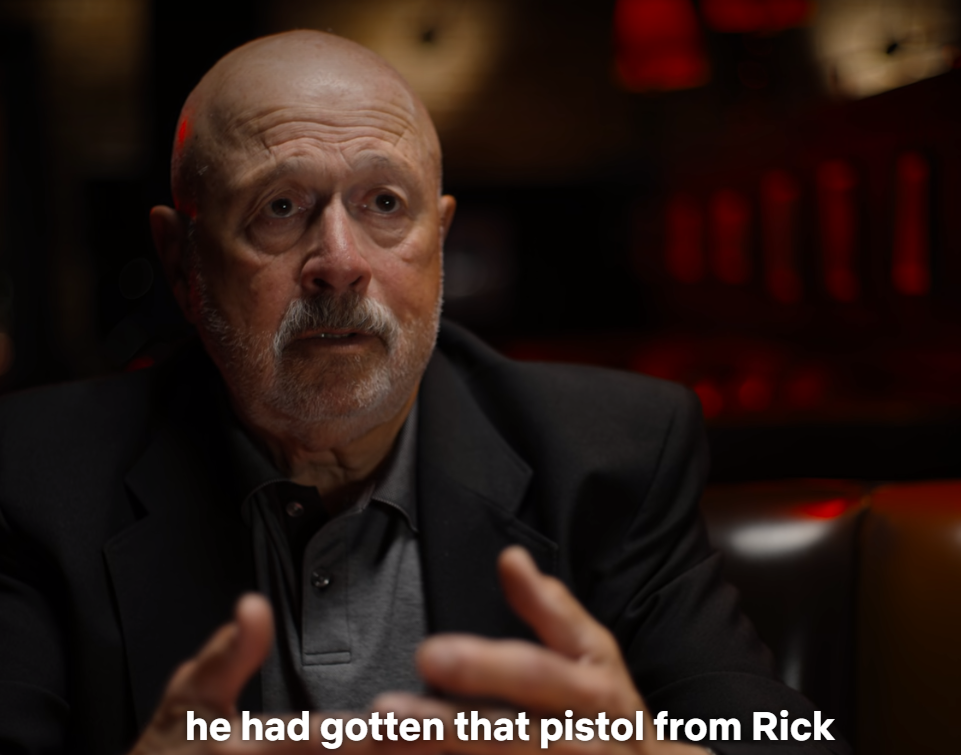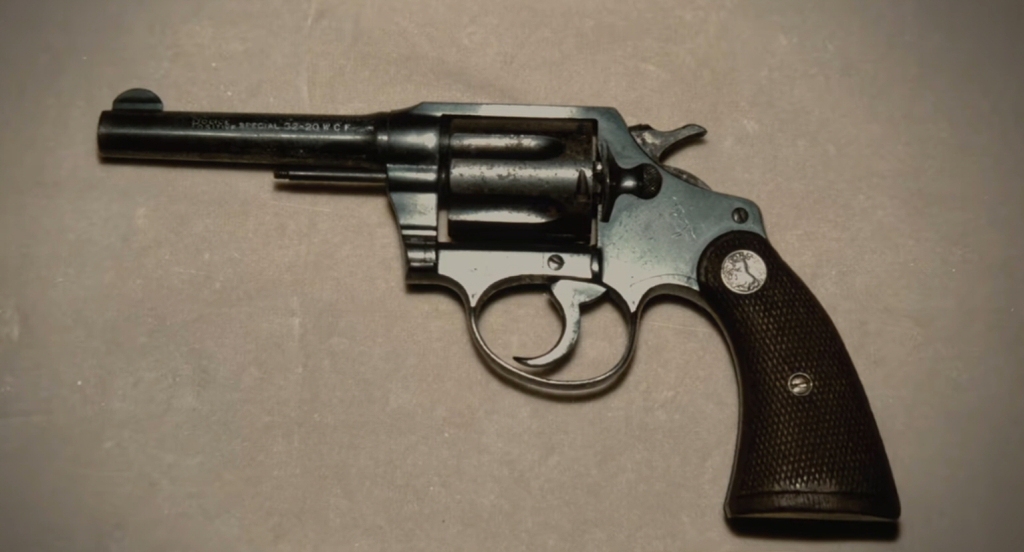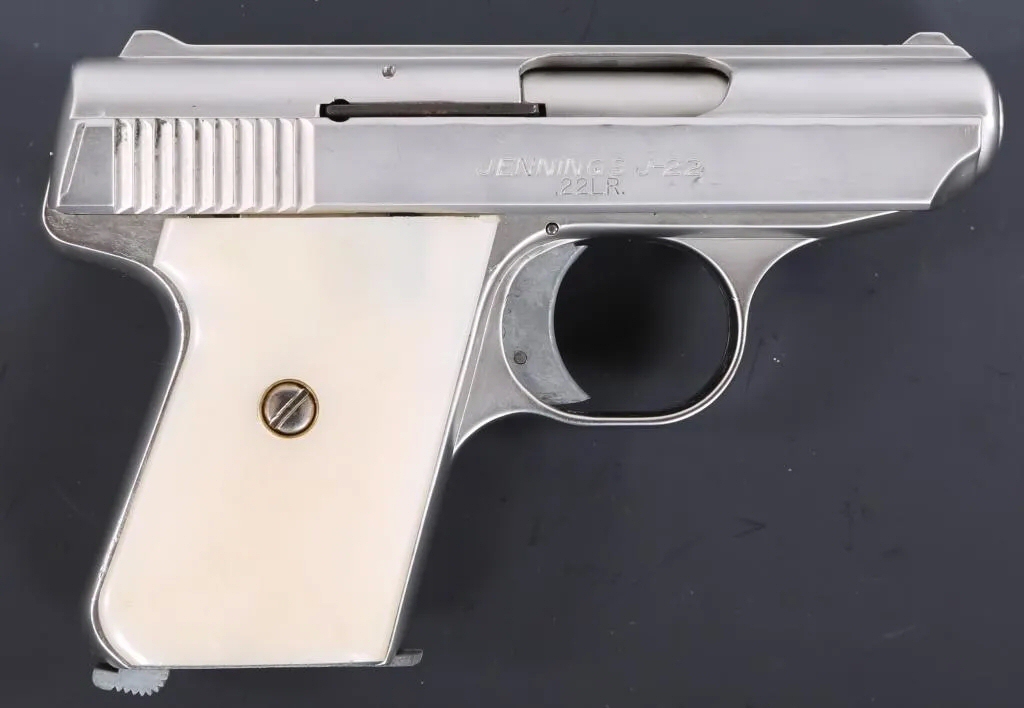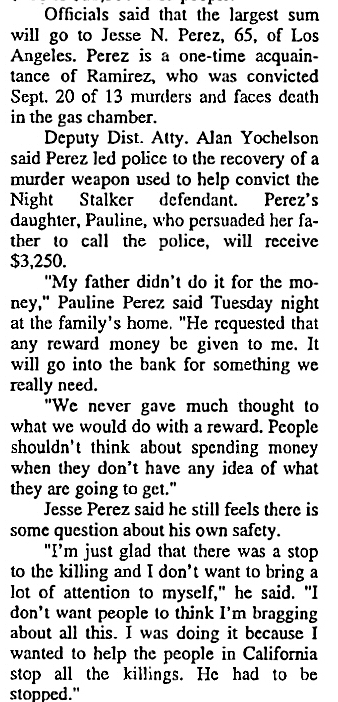Have you ever watched Night Stalker: the Hunt for a Killer and thought ‘something isn’t quite right’? Well, there are a lot of things about it that are not quite right, such as the inclusion of crimes Ramirez was never convicted of: the child abductions and the murder of Patty Higgins. Then there are things that simply cannot be true.
Frank Salerno’s Unverifiable Claims
Sergeant Salerno made a claim in the documentary that seems to be at variance with documented evidence regarding a police informant named Jesse Perez and a .22 Jennings pistol. Perez was a man in his 60s who had previously been imprisoned for manslaughter following a bar fight in the 1940s and also for burglary. He drove Ramirez around and was connected to the ‘fence’ Felipe Solano. Sergeant Salerno (yes, their names are confusing) claims Perez said Ramirez had offered him the pistol and bragged about using it to kill an East Asian couple in Monterey Park. The documentary then displays a photo of William and Lillian Doi. It was important, Salerno says, because the type of gun was not known to the public, therefore, Jesse Perez had to be telling the truth.

The problem with Salerno’s recollection is… there is no record of Jesse Perez saying such a thing at trial and it is not mentioned or challenged in the Habeas Corpus Petition. Perez’s original allegation was that Ramirez boasted of burgling “Orientals” because they did not retaliate. Then he made a comment about Ramirez saying he targeted yellow houses. The ‘targets yellow houses’ theory was something an FBI profiler had come up with in the newspapers, so Perez could easily have invented this confession – after all, he was angling for a slice of the informant’s reward (more on that later). Even Philip Carlo’s book – in which the only decent section is the trial – does not mention anything about Perez claiming Richard Ramirez confessed to murder (Pages 330-331). The newspapers did not report the confession either. He merely says Ramirez was a burglar, who once sold him a gun. Frank Salerno is either misremembering or he is lying.
It is also unlikely from a logical standpoint. Richard Ramirez was mentally ill, but would he really flippantly confess to a man that he murdered two people with the very gun he was selling him? Why would Perez even take a weapon that had been used in a murder at a time when the attacks were gaining news coverage? A normal person would not touch this weapon for fear of being implicated. He would immediately go to the police, but instead, Perez sold it to a friend in Tijuana, then called the police after money was offered by the City of Los Angeles.
Not only this but the Doi attack was not a double murder, but somehow Salerno failed to notice this glaring error in his claim. Lillian was beaten and restrained with thumb cuffs. William was shot in the head but was still alive and mobile after the shooting – he even phoned the police twice and moved about the house. It was thought to be cardiac arrest that caused his death in hospital, not necessarily the gunshot wound – although the shock of it did cause his heart to stop. Both victims were alive when the killer left. Lastly, if Perez really had revealed inside information about the murder weapon, he should have become a suspect – that he did not probably means Ramirez never confessed to murder.
What is Wrong with This Picture?
Documentary makers, the media and even detectives Salerno and Carrillo do not care about truth; they care about sensation. But to lie, there needs to be verisimilitude: if you are accusing someone of using a certain firearm, the correct firearm needs to be displayed even if the original is lost. That is where a major failure in the documentary occurs – but it is not entirely the producer’s fault – it is linked to errors at the actual trial. A dramatic noise plays and up pops the exhibit – a .22 Jennings pistol – only, it wasn’t…

A Jennings pistol (now called a Jimenez pistol) is semi-automatic. The photo above, shown in this part of the documentary, is a double-action revolver, more specifically, if you look at the logo and the serial number on the barrel, a Colt Police Positive. Below is a .22 Jennings/Jimenez pistol. They are tiny.

As you can see, these are totally different weapons. The Colt revolver has a cylinder, whereas the Jennings uses a magazine clip in the handle.
When Did the Gun Change Hands?
Perez’s friend, to whom the gun was given was granted immunity from prosecution. She did not know Ramirez:
“Esperanza Contreras testified that she had been living in Tijuana, Mexico for fifteen years and that she knew Jesse Perez. She first saw the handgun three years prior to trial. Perez brought it to her because she needed a gun for protection … She had the gun for about a month and then gave it to a police officer. She was granted immunity from prosecution at the preliminary hearing.”
Federal Writ of Habeas Corpus, pg. 109
At trial, under cross-examination, the defence pushed Perez into admitting he originally told police that he received the gun months before William Doi was killed, which he said he forgot, because he was ‘senile.’ Yes, really (Carlo, pg. 330).
“On cross-examination, Perez did not recall that he had previously testified at the preliminary hearing about asking Petitioner to sell him a handgun six to nine months before Petitioner’s arrest.“
Federal Writ of Habeas Corpus, pg. 108.
The Lost Weapon: Confusion at Trial
Perez’s weapon disappeared during the trial, and the prosecutor, Philip Halpin, felt that this was not a problem – the jury and witnesses looked at dummy weapons anyway. But surely this is a huge problem – this was supposedly the only weapon recovered from the Night Stalker attacks and it was mislaid?
If the Colt revolver shown on the documentary was the one witnesses saw in the courtroom, it explains the inconsistent descriptions they gave of the weapons.
Sophie Dickman claimed to know the difference between revolvers and semi-automatics, and felt that she had seen a Jennings pistol, but her testimony can hardly be trusted. She was one of the least reliable witnesses in the entire case, as well as being hostile on the stand. She even changed the description of the attacker and the nature of the attack.
Then there was Ramirez’s ‘friend’ Earl Gregg to whom Ramirez allegedly tried to sell some guns in April 1985:
“Petitioner asked Gregg if he wanted to buy a gun. Petitioner showed him two guns: a .25-caliber automatic and a small-caliber, black revolver that resembled the Jennings handgun.”
Federal Writ of Habeas Corpus, pg. 112
How could a black revolver resemble the Jennings? The Jennings (later Bryco, then Jimenez) company have never produced revolvers. Neither gun Gregg saw was a .22 long rifle semi-automatic.
So, there never was a recovered murder weapon.
Both Jesse Perez and Earl Gregg – and their families – received rewards from the cites of Los Angeles and San Francisco. Perez was given the most.

-VenningB-
21st November 2022

Leave a comment